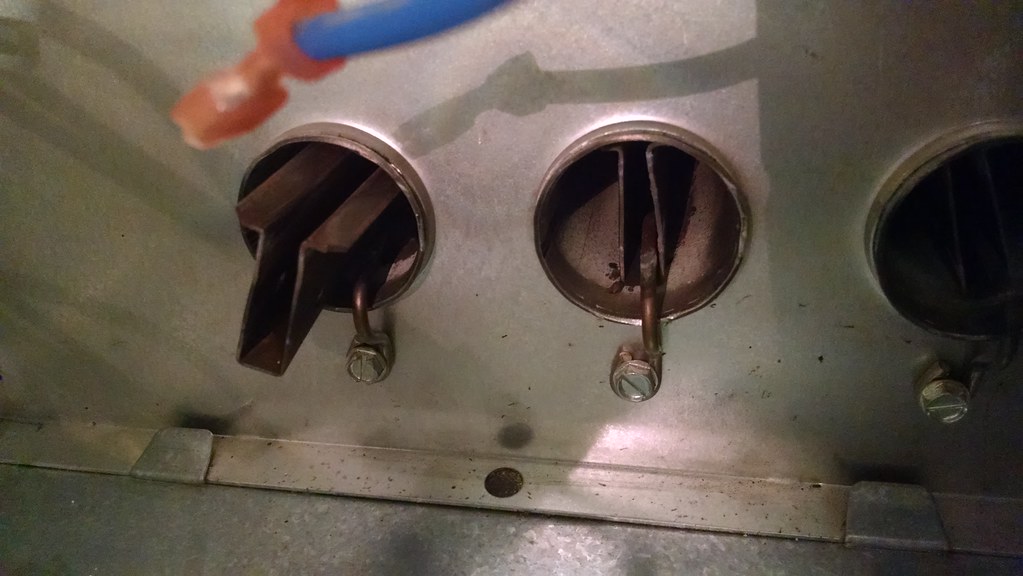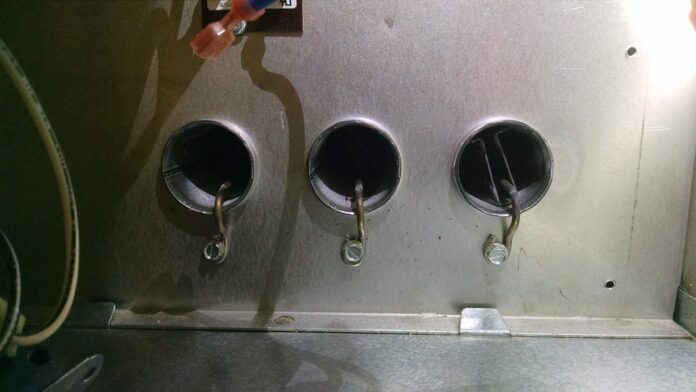Furnace heat exchangers are an essential part of gas-powered furnaces. But what exactly does a heater accomplish? To comprehend how a heat exchanger in furnace functions, first, let’s look at how your furnace produces heat. The furnace uses gas or other types of fuel and burns it. The process has an energy that is heated. However, the process could produce hazardous flue gasses This is why it is conducted in a sealed chamber, which can be vented outside. A heat exchanger is needed to remove the heat from the closed section.
Furnace heat exchanger
A furnace heat exchanger is a small metal part that connects it and its blower. When the combustion chamber heats the exchanger, the heat is transferred to the air that is flowed through the area. The atmosphere is free of flue gasses and is pushed through the ducts that provide warmth to your home. It essentially absorbs the heat energy produced by the combustion process and converts it into air safe to breathe.
Your heat exchanger should have an air-tight seal to keep flue gasses from your home since the gas produced by the combustion could be harmful to your health, including carbon monoxide, which is fatal.
Are electric furnaces have heat exchangers?
Electric furnaces don’t employ heat exchangers since they don’t make fuel. The air is heated directly by passing it over hot coils heated by electricity.
How to determine if the furnace heat exchanger goes bad?
The gas furnace’s heat exchanger will last about 10-20 years. However, it’s likely to be damaged. It’s due to how your furnace operates. The metal expands when heated and shrinks as it cools. In time the cycles of expansion and contraction can lead to fatigue of the metal. This could cause the metal to bend within the heat exchanger, causing it to break or crack. In the event of this, it may cause the seal to break that divides the flue gases from the airflow, causing a hazardous situation that requires the assistance of an expert.
Is it worthwhile to replace a furnace’s heat exchanger?
A heat exchanger replacement can cost anywhere between $2,000 and $3,500. If your stove is relatively young, replacing the heat exchanger might be a wise course of action. Nevertheless, when the heat exchanger is approaching the end of its lifetime, which is 10 years more than, it is not worth wasting money on repairing it.
Bad furnace heat exchanger symptoms
To determine if your heating exchanger requires replacement, the first step is an inspection of the visual. Technicians can utilize an infrared video inspection to assess the health of your heat exchanger and decide the need for replacement. Here are some warning signs that may indicate that the heat exchanger inside your furnace is failing.
Changes in Flame Color
If your gas furnace operates well, it emits an ethereal blue flame. In the sealed chamber, it must be burning steadily and without flickering. If it’s burning out of control or the color is changing into yellow could indicate that oxygen is entering the chamber via an infected heat exchanger.
Discolored metal
If a heat exchanger breaks, it may become discolored due to soot accumulation. Cracks in the seal break into the combustion chamber and allow soot to escape onto the other side. You might notice dark spots on the surface where the gaps are located. It is also possible to see soot accumulating in your furnace. This is a sign that the burner isn’t functioning correctly. The soot results from carbon accumulation as the furnace aren’t burning the gas entirely. It can be caused by faulty burners or a damaged heat exchanger.
Read More: Gas Log Fireplace: A Comprehensive Guide About Gas Log Fireplace Insert
Carbon Monoxide Detected
Carbon monoxide could be an unintended byproduct from the process of combustion. It’s a non-visible gas that isn’t odorless. If it is allowed to build up in homes, it could be fatal. This is why it is recommended that the Center for Disease Control recommends that every house has CO detectors and annual checks for the furnace.
Strong Odors
However, although carbon monoxide does not smell, other gases can be detected. If your heating unit emits a strong, unpleasant smell, it could indicate that your heat exchanger may be faulty. Many people compare the smell to formaldehyde. It could also be poisonous. If you detect it, contact a certified technician.

Clogged Heat Exchanger
Dust and dirt can build up within your furnace, causing blockages, blowers, filters, and coils. The buildup could lead to blockages in your heat exchanger and stop air flow effectively throughout the unit.
Poor Heating
If there’s damage to the heat exchanger, the performance of your furnace will be diminished. The stove has more effort to produce warm air that can be used to heat your home. There is a chance that your furnace will not perform as well and an increase in the cost of your utilities.
What can we do if the furnace heat exchanger goes bad?
If you notice any of these signs and think your furnace might have an issue with the heat exchanger, it’s best to contact an expert HVAC contractor to examine the stove. This isn’t something you’ll want to take on yourself and isn’t something to put off. The continued operation of the furnace that has a damaged heat exchanger could cause health risks to you. It is recommended to stop the unit and have a certified technician inspect it. If an inspection revealed metal fatigue and caused cracks, even small ones that are hard to spot, then it’s time to upgrade.
A damaged heat exchanger will not be repairable. It must be replaced. If the manufacturer’s warranty doesn’t cover the unit, it can cost $1,500 to $2,000 for replacement. Warranty coverage typically covers only the price for the exchanger. So even if the warranty covers it by a contract, you’ll have to pay for the labor that can run around $500.
Also, it would help if you considered the furnace’s condition. It may not be worthwhile if your furnace is old. A cracked heat exchanger might be the sign of a more significant issue in your furnace, like overheating. You may spend the amount on replacing the heat exchanger, only to discover an even bigger problem that will need to be fixed.
How to install a furnace heat exchanger?
Installing a furnace heat exchanger is an important step in ensuring that your heating system operates effectively and efficiently.
Tools and Materials Required
Before starting the installation process, make sure you have the following tools and materials on hand:
- Furnace heat exchanger
- Screwdriver
- Wrench set
- Teflon tape
Removing the Old Heat Exchanger
- Turn off the power to the furnace.
- Locate the heat exchanger inside the furnace.
- Disconnect any electrical connections from the heat exchanger.
- Use a wrench to loosen and remove any bolts securing the heat exchanger in place.
- Carefully remove the old heat exchanger from the furnace.
Installing the New Heat Exchanger
- Clean the area where the new heat exchanger will be installed.
- Apply Teflon tape to the threads of the inlet and outlet connections on the heat exchanger.
- Place the heat exchanger in the furnace.
- Use bolts to secure the heat exchanger in place.
- Reattach any electrical connections.
Testing the Heat Exchanger
- Turn the power back on to the furnace.
- Set the thermostat to call for heat.
- Observe the furnace to ensure that the heat exchanger is functioning properly.
FAQs
- How often do they crack?
The age-related wear and tear on your furnace will likely result in cracks as time passes. When your furnace appears to be getting old and is showing signs of cracks, it could be beneficial to determine the condition of the heat exchanger. Heat exchangers last between 15 and 18 years. If your exchanger is getting old and is showing signs of wear, it could be an appropriate time to change it.
- What is wrong with an exchanger?
Another problem found in the heat exchangers is corrosion due to condensation, which could cause a hole. A crack or cavity within the exchanger can result in the burner flame spreading out from towards the outside of the furnace every time the fan is on since there is no wall between the moving air and the flame.
- How long will the furnace’s heat exchanger last?
Although heat exchangers are generally designed to last between 10 and 20 years, many elements can speed up the failure process.





